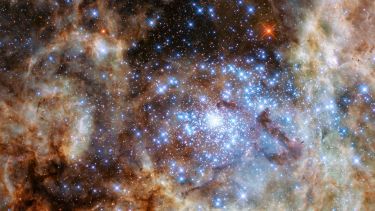Massive Stars

Off
Academic staff: Professor Paul Crowther
PhD students: Thaer Alkousa
Honorary Professor: Professor Andy Pollock
Massive stars
Massive stars play a leading role in the ecology of galaxies via their radiative, chemical and mechanical feedback, although their evolutionary pathways remain unclear. We are interested in the evolution of the most massive stars in the universe from the main-sequence to late evolutionary stages (red supergiants, Wolf-Rayet stars).
We exploit X-ray, ultraviolet, optical and infrared datasets of massive stars from ground- (VLT) and space-based observatories (HST, Chandra, Spitzer) in combination with state-of-the-art analysis tools, stellar atmosphere computations and stellar structure calculations.
